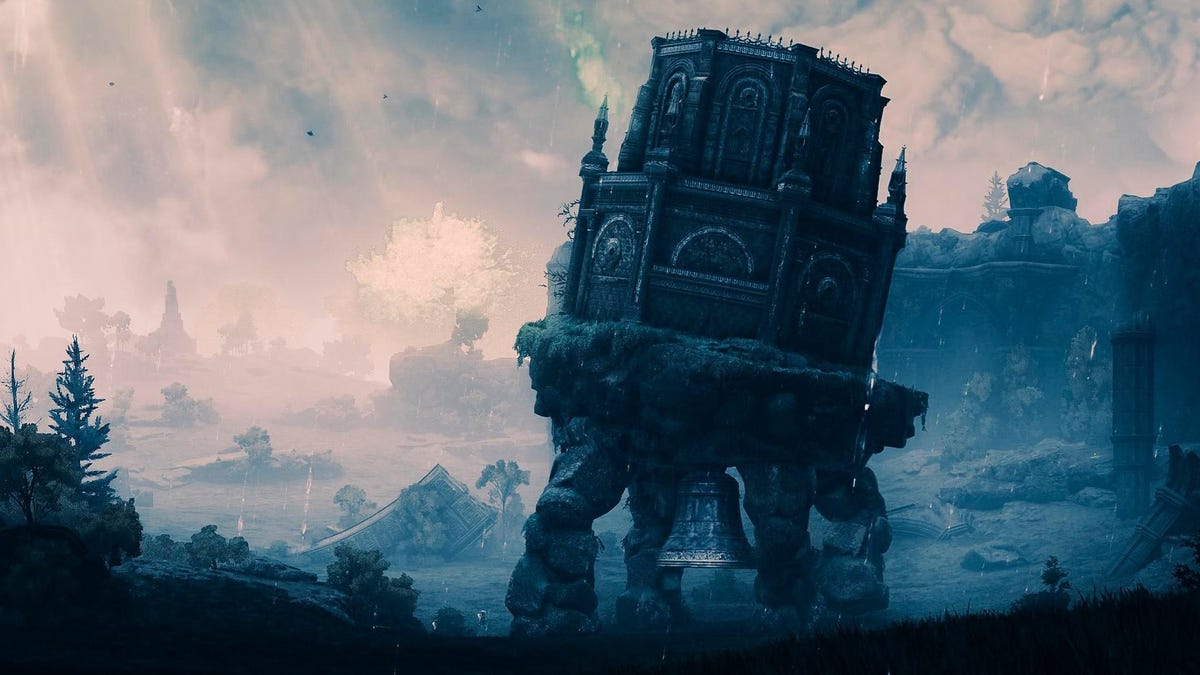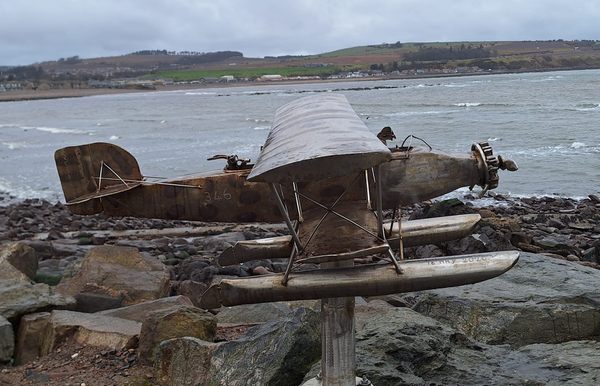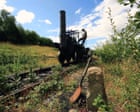How to Take the Ultimate American Stargazing Road Trip
In the West, where I grew up, there is rarely such a thing as a short drive. If you want to get outside beyond a city like Denver—and much of the reason for living in Denver is the chance to get outside—you have to get in a car, and then spend a lot of time there. Drives are an underrated form of exploration and expansion. And the ability to drive at night, if you can, offers an unparalleled chance to explore the stars. If you are the passenger, or your kids are in the backseat, even better. Look at a map of Earth at night from space, and you can easily spot the biggest cities; most of Europe is awash in blazing light. But the United States is shaded in enormous gaps of darkness. Sometimes these are bisected by faint lines, which mark the interstate highways, but, for the most part, highways outside of cities are not illuminated except by your headlights. How to Plan for a Stargazing Road Trip As you drive to your destination, this means you can see the stars overhead. Allow them to carry you west to some of the best stargazing spots you can reach by car. I recommend starting your journey in the Centennial State, Colorado, for the beginning of a multi-state tour through the Colorado Plateau, a high-altitude region of tablelands and canyons running through four states. Book your tickets to arrive toward the middle of a lunar cycle. This way, you will be ensured darkness in the early evenings for up to two weeks, before the waxing crescent moon starts to dominate the nightscape. Colorado Wet Mountain Valley Head south from Denver, through Colorado Springs, and then west in the railroad town of Canon City. Head through the pass near Royal Gorge, and turn toward the towns of Westcliffe and Silver Cliff in the Wet Mountain Valley. These two mountain communities were Colorado’s first designated Dark Sky Communities, and it shows. Westcliffe is home to Smokey Jack Observatory, a wooden building with a retractable roof. Outside is an outdoor amphitheater, where the stars of the show are actual stars. Between the Wet Mountains and the Sangre de Cristo mountains, the Wet Mountain Valley has strict building codes designed to preserve the region’s agricultural and ranching heritage. So it was not difficult for dark-sky advocates to convince their neighbors to embrace darkness as another very rural character trait. The towns are now tourist attractions for people seeking communion with the darkness, and have served as a model for other communities around the state. In 2024, a coalition of communities and advocates in southern Colorado was working to create the world’s largest International Dark Sky Reserve. The proposed Sangre de Cristo International Dark Sky Reserve would straddle the 14,000-foot mountain range from which it takes its name, stretching from the outdoorsy town of Salida to the north, south to the New Mexico border, and from the college town of Alamosa east to the edge of the Wet Mountains. It encompasses a ski town, unparalleled backpacking and hiking opportunities, and the Great Sand Dunes National Park. Chimney Rock National Monument From the Great Sand Dunes, head southwest for Pagosa Springs. Enjoy a night in this small town with a natural hot spring, and then make your way toward Chimney Rock National Monument. Chimney Rock is one of the West’s hidden gems. It’s centered on a pair of sandstone spires, carved by wind and time, and the home of an ancestral Puebloan Great House. Thousands of people lived here 1,000 years ago, and farmed squash and other crops. Today, Chimney Rock not only offers dark skies, but a deep connection to the moon, which follows an 18-year journey similar to the sun’s path during the annual solstices. The people who lived in Chimney Rock built their pueblo beneath the sandstone spires because the rock formations embrace a rising full moon every 18 years. New Mexico Chaco Culture National Historical Park From Chimney Rock, the high desert of northern New Mexico is plainly visible. You will drive through this landscape to reach another, more famous ancestral Puebloan site. Chaco Culture National Historical Park encompasses a network of archaeological sites in northwestern New Mexico. They include preserving several buildings and settlements from the Puebloan culture, a huge, sophisticated society that flourished in the Southwest beginning in the 800s, and reaching its peak about 1100, or 400 years before the arrival of European settlers. You will want to aim for Chaco Observatory, which is operated by the National Park Service and hosts public astronomy programs throughout the year. A millennium before artificial light at night, before transit and industrial pollution, people in most cultures around the world were more connected to the natural world. In the American Southwest, with its dry, thin air, the night sky was a tool for keeping time; a way to access the spirit realm; and a constant companion. Chacoan people were sophisticated astronomers, and their

In the West, where I grew up, there is rarely such a thing as a short drive. If you want to get outside beyond a city like Denver—and much of the reason for living in Denver is the chance to get outside—you have to get in a car, and then spend a lot of time there. Drives are an underrated form of exploration and expansion. And the ability to drive at night, if you can, offers an unparalleled chance to explore the stars. If you are the passenger, or your kids are in the backseat, even better.
Look at a map of Earth at night from space, and you can easily spot the biggest cities; most of Europe is awash in blazing light. But the United States is shaded in enormous gaps of darkness. Sometimes these are bisected by faint lines, which mark the interstate highways, but, for the most part, highways outside of cities are not illuminated except by your headlights.
How to Plan for a Stargazing Road Trip
As you drive to your destination, this means you can see the stars overhead. Allow them to carry you west to some of the best stargazing spots you can reach by car. I recommend starting your journey in the Centennial State, Colorado, for the beginning of a multi-state tour through the Colorado Plateau, a high-altitude region of tablelands and canyons running through four states.
Book your tickets to arrive toward the middle of a lunar cycle. This way, you will be ensured darkness in the early evenings for up to two weeks, before the waxing crescent moon starts to dominate the nightscape.
Colorado
Wet Mountain Valley
Head south from Denver, through Colorado Springs, and then west in the railroad town of Canon City. Head through the pass near Royal Gorge, and turn toward the towns of Westcliffe and Silver Cliff in the Wet Mountain Valley. These two mountain communities were Colorado’s first designated Dark Sky Communities, and it shows.
Westcliffe is home to Smokey Jack Observatory, a wooden building with a retractable roof. Outside is an outdoor amphitheater, where the stars of the show are actual stars. Between the Wet Mountains and the Sangre de Cristo mountains, the Wet Mountain Valley has strict building codes designed to preserve the region’s agricultural and ranching heritage. So it was not difficult for dark-sky advocates to convince their neighbors to embrace darkness as another very rural character trait. The towns are now tourist attractions for people seeking communion with the darkness, and have served as a model for other communities around the state.
In 2024, a coalition of communities and advocates in southern Colorado was working to create the world’s largest International Dark Sky Reserve. The proposed Sangre de Cristo International Dark Sky Reserve would straddle the 14,000-foot mountain range from which it takes its name, stretching from the outdoorsy town of Salida to the north, south to the New Mexico border, and from the college town of Alamosa east to the edge of the Wet Mountains. It encompasses a ski town, unparalleled backpacking and hiking opportunities, and the Great Sand Dunes National Park.
Chimney Rock National Monument
From the Great Sand Dunes, head southwest for Pagosa Springs. Enjoy a night in this small town with a natural hot spring, and then make your way toward Chimney Rock National Monument.
Chimney Rock is one of the West’s hidden gems. It’s centered on a pair of sandstone spires, carved by wind and time, and the home of an ancestral Puebloan Great House. Thousands of people lived here 1,000 years ago, and farmed squash and other crops.
Today, Chimney Rock not only offers dark skies, but a deep connection to the moon, which follows an 18-year journey similar to the sun’s path during the annual solstices. The people who lived in Chimney Rock built their pueblo beneath the sandstone spires because the rock formations embrace a rising full moon every 18 years.

New Mexico
Chaco Culture National Historical Park
From Chimney Rock, the high desert of northern New Mexico is plainly visible. You will drive through this landscape to reach another, more famous ancestral Puebloan site. Chaco Culture National Historical Park encompasses a network of archaeological sites in northwestern New Mexico. They include preserving several buildings and settlements from the Puebloan culture, a huge, sophisticated society that flourished in the Southwest beginning in the 800s, and reaching its peak about 1100, or 400 years before the arrival of European settlers. You will want to aim for Chaco Observatory, which is operated by the National Park Service and hosts public astronomy programs throughout the year.
A millennium before artificial light at night, before transit and industrial pollution, people in most cultures around the world were more connected to the natural world. In the American Southwest, with its dry, thin air, the night sky was a tool for keeping time; a way to access the spirit realm; and a constant companion.
Chacoan people were sophisticated astronomers, and their connections to the night sky are visible in the orientation of their buildings, which face sunrises and sunsets, and in their art. Petroglyphs in the region depict the Sun, Moon, stars, and potentially the supernova that produced the Crab Nebula, which exploded in 1054. You can seek a similar form of celestial communion in the archaeological sites left behind.
Arizona
From Chaco Culture Park, head west for the northern half of beautiful Arizona, home to some of the world’s darkest skies.
Flagstaff and Lowell Observatory
The small college town of Flagstaff is the world’s first International Dark Sky City, a designation it received in October 2001. The title is really the culmination of years of connection to the night sky, in part to protect Lowell Observatory, a famous astronomical institution named for Percival Lowell. He built the observatory to look for life on Mars, and famously believed he had found canals there; the observatory grew in prominence in 1930, when Clyde Tombaugh used the 13-inch telescope to discover Pluto, known for 75 years as the ninth planet from the Sun.
Lowell Observatory hosts several types of dark sky outreach, from star parties to private events. While you’re in town, enjoy locally brewed beer from Dark Sky Brewing Co.
Grand Canyon
A night sky visit to Arizona would not be complete without a trip to the Grand Canyon. From Flagstaff, head north to the Grand Canyon’s south rim, where you can find accommodations, shops, and trailheads into the canyon itself. From the Grand Canyon Village on the south rim, look for Mather Point, an iconic viewpoint and an excellent spot for stargazing located near the Grand Canyon Visitor Center.
Anywhere in the Grand Canyon is a great place to stargaze, but if you want to try photographing the canyon’s nighttime blackness against the Milky Way, you will want to head over to the north rim. The galaxy’s core spreads across the southern sky, so it’s harder to see both the galactic smear and the canyon’s rim. But a view from the north will give you both.
The Grand Canyon is the most superlative, but not the only great canyon of the West you’ll experience on this dark sky journey. After a day exploring the work of the Colorado River, head north into Utah.

Utah
Bryce Canyon National Park
This park was designated an International Dark Sky Park in 2019, and park staff are proud to maintain some of the darkest skies in the U.S. Like many sites in the West, Bryce Canyon’s high elevation and remote location provide the ideal recipe for super-dark skies. On clear nights, especially in the summer months, the Milky Way is bright enough to cast a shadow.
Capitol Reef National Park
A couple hours northeast is another stunning vista, Capitol Reef National Park, which hosts iconic red sandstone rock formations, excellent hiking trails, and pristine dark skies. By this point in your trip, you may be entering the full moon phase, so it’s worth checking with park rangers to find out if there are any guided full moon hikes. Many national parks and state parks in the West host these events, designed to get adults and kids outside at night, where they may be surprised how much there is to see without artificial illumination.
Ending the Journey
From the sandstone spires of Utah’s national parks, it’s a long way back to the Denver airport. Consider an overnight stop in Glenwood Springs, a railroad and mining town with a well-loved hot spring that feeds baths and pools at several different resorts. The pools are warm at night, and a wonderful place to see the stars.
You won’t see as many stars as you did in Chaco Canyon, or at Capitol Reef, but if you spent time with them on the journey through the Four Corners states, you’ll recognize some of them by now. The brightest stars and most familiar constellations will be obvious to you, even with the lights of Glenwood Springs and Interstate 70. Hopefully, after truly experiencing how many stars spangle the heavens, you will carry them home with you. I hope you are always able to find them, wherever you live, no matter how bright or how dark your backyard skies.
































































































































































































































































